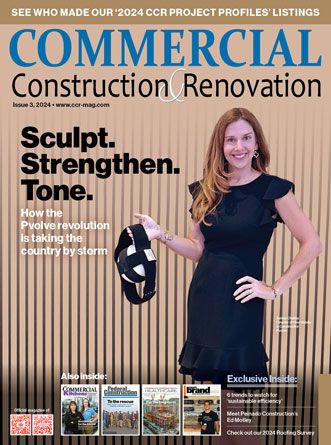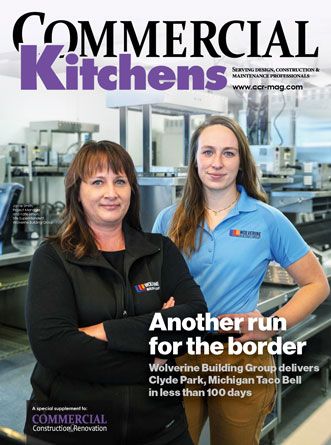
All the planet really wants is room to breathe. But with the rising rates of CO2 emissions in the Earth’s atmosphere, that goal might not be attainable in the near future.
Thankfully, innovators are working round the clock to find ways to help create a healthier planet from scouting out natural resources on Mars to using innovative concrete solutions on construction projects.
If you haven’t already jumped on the sustainable materials bandwagon, here are 8 ways to drastically cut your carbon footprint using innovative concrete technology.
- Get Educated
Did you know that concrete accounts for around 7 percent of the world’s man-made greenhouse emissions? That number should be enough motivation to take action but there’s always more.
In fact, educating yourself and your team about the impact of the concrete production process is key to making sure everyone commits to new best practices.
Cement is the second largest source of carbon dioxide in the atomosphere emitting around 4 billion pounds of CO2 in a single year. A Canadian company is aiming to change all that.
CarbonCure traps CO2 in concrete forever so it never actually reaches the atomosphere. What if the building gets demolished?
Does the trapped CO2 leak back out into the atomosphere? Not at all.
Once the cement sets, the CO2 becomes a part of the concrete permanently.
- Buy Emitted CO2
Add to your company’s shopping list a few pounds of CO2 the next time you stock up on supplies. You can now reuse other company’s CO2 waste to create your own CarbonCure cement product.
It’s a great way to recycle gas while providing your business with an environmentally friendly solution. Why add the expense to your operations budget if your process of making cement is already flowing smoothly?
The environment is one reason, but the second is that it makes business sense. The quality of the concrete you get from injecting CO2 is far superior to the concrete you’re making that emits greenhouse gases.
- Use Less Concrete
You’ll use far less concrete with the CarbonCure system of creating cement. The primary reason for this is that CO2 makes your concrete stronger.
That means you won’t need as much to do build the same structures as you did before. You can cut your concrete use in half helping to save money.
In general, the money you spend getting CO2 for your cement balances out with what you save in using less concrete. You can do all this while helping to cut the world’s man made carbon dioxide output in half.
That’s no small feat especially since you’re spending around the same amount anyway.
- Capturing CO2 During Production
What about the CO2 waste that escapes during cement production? If you’re using innovative concretes, your carbon emissions are instantly reduced by 70 percent.
You won’t need to manually trap CO2 back into your innovative concrete because that’s what it’s made to do on its own. As it cures, it’s locking in around 300 kg of CO2 per ton.
This makes innovative concrete an ideal solution for building roads and driveways. Innovative concrete supporters hope the technology will soon gain traction in public spaces where the CO2 byproduct is so concentrated it results in poor air quality.
- 3D Print Your Concrete
It’s now possible to 3D print your concrete buildings. According to researchers at UCLA, there’s a 3D printing machine underway that incorporates carbon dioxide while printing helping to reduce its carbon footprint by as much as 60 percent.
This is the high tech version of innovative concrete’s solution, but provides an automated solution all manufacturer’s should learn. The concrete industry can learn from the auto parts industry in how they’ve transformed how they create products on the assembly line with 3D printing.
3D printing will also help production costs by reducing waste. Manufacturers who use 3D printing technology boast a major reduce of waste as a result of precision printing.
When thinking of a large building made of concrete, this can mean a major savings in materials costs.
- Add Bacteria
Bacteria is a gift and a curse. While most factories prefer to keep the grounds free of microbial invasions, cement factories might actually want to keep a certain on hand at all times.
Studies reveal that by adding bacteria during the concrete production process, manufacturers can use less energy. The claim is that this process replaces cement altogether.
The process works when microorganisms are injected into sand. It starts a process similar to the process of making coral in the ocean.
In a lab environment, the sand remains at room temperature for several days. The bacteria grows free of fossil fuels and calcination which is where the harmful CO2 emissions comes from.
- Innovative Concrete is Now
One of the biggest issues with implementing change in the concrete industry is that many leaders try to make changes using existing technology. They’ve used the same practices for centuries making the idea of adopting a completely new system seem attainable.
But you can’t solve the climate problems using old technology. The outdated workflow doesn’t just hurt the environment it hurts the bottom line of the 6,500 plants in Canada and the U.S. who still haven’t adopted innovative concrete.
- Concrete Degradation is Real
Innovative concrete isn’t perfect. But it certainly has less degradation problems than traditional concrete.
The innovative concrete technology is inspired by ancient buildings that have stood the test of time like the ancient African pyramids and the Roman Pantheon. These architectural wonders set the bar high on building longevity.
Innovative concrete brings the opportunity to better quality structures proven to last through the ages.
The Latest Concrete Innovation
Concrete technology has a long way to go. But innovative concrete solutions are enough to solve many of our climate problems now.
There are still many concrete producers to convert, but change is happening. Get on board with innovative concrete to do your part in reducing harmful emissions that are easy to subdue.
For more information and tips, visit our blog for updates.







 The 2024 virtual Men’s Round Table will be held Q4, 2024, date TBD.
The 2024 virtual Men’s Round Table will be held Q4, 2024, date TBD.











